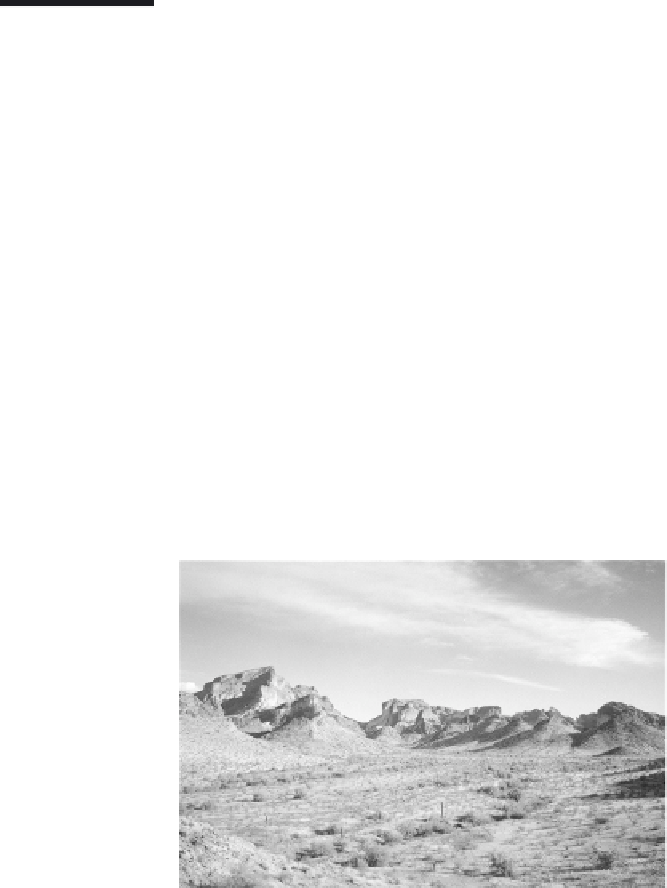Environmental Engineering Reference
In-Depth Information
when designing with the desert rather than an exhaustive technical work. This overview
draws from a number of references and should therefore be considered as only the “tip of
the iceberg” or perhaps “the crest of the dune” for these subjects. These references—which
include both introductory texts and more specialized works—are called out at appropriate
points in the text to guide the interested reader to sources of further information on desert
geology, geomorphology, and soils.
2.2 Characteristics and Distribution of Deserts
Deserts typically have an annual water budget deficit; in other words, more water is
withdrawn for use by plants and animals (including humans) in a given year than is
replaced by natural recharge mechanisms (like precipitation) (Chapters 3 and 7). Annual
precipitation in arid regions is <25.4 cm/year; the Phoenix, Arizona, metropolitan area
averages about 18 cm/year.
Desert regions typically have lower vegetation cover than landscapes in more temperate
climates (Figure 2.1) (see Chapter 7). As deserts are defined primarily on the basis of low
precipitation and not on average temperatures, there are warm (e.g., the Sonoran and
Chihuahuan Deserts), cool (e.g., the Mojave Desert), and cold (e.g., Antarctica) deserts. We
will focus on the geological and soil characteristics of the warm deserts of central and
southern Arizona as these regions have experienced significant development pressures
over the past few decades.
Most of the world's deserts are located around latitude 30°N and 30°S, essentially bracketing
the equatorial regions.
2
Atmospheric circulation cells cause cool, water-laden air from the
equator to condense out water as they rise and move northward or southward. These now
dry and warm air packets descend into the desert regions, causing even more evaporation
of surface water and contributing to the dry character of the landscape (see Chapter 3).
FIGURE 2.1
The Sonoran Desert in the Eagle Tail Mountains west of Phoenix, Arizona. Note the characteristic desert
features of exposed bedrock mountains on the skyline surrounded by alluvial fans of sediment derived from
the hillslopes in the foreground; dry washes developed on the fan surfaces; and sparse vegetation cover.
(Courtesy of W.L. Stefanov.)

Search WWH ::

Custom Search